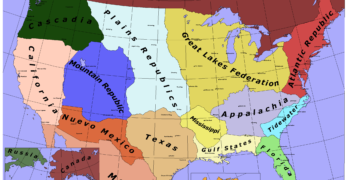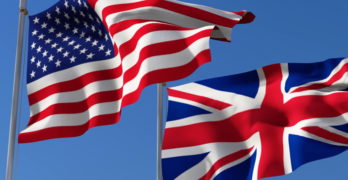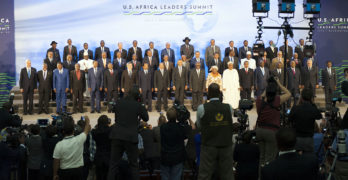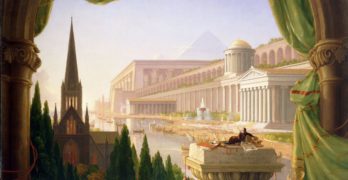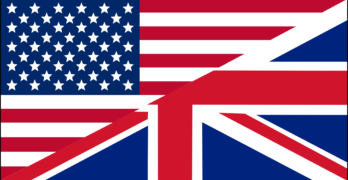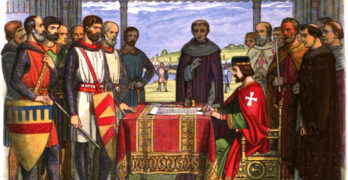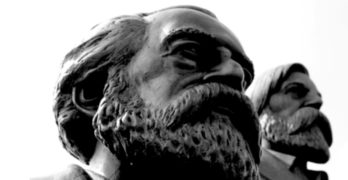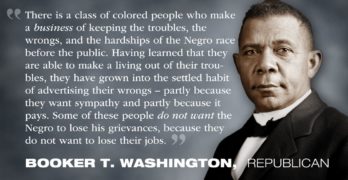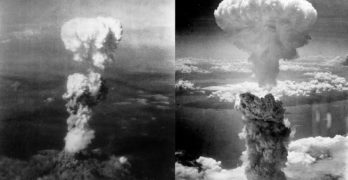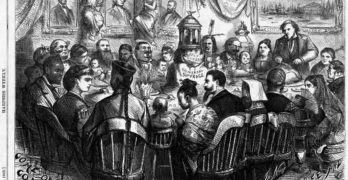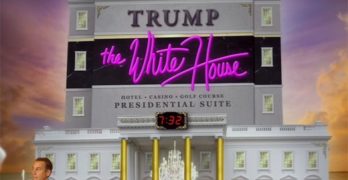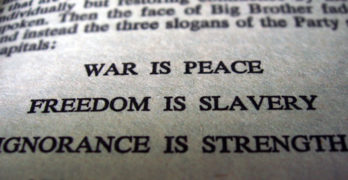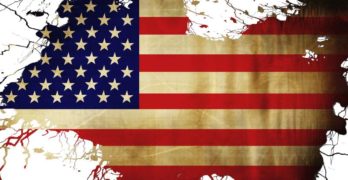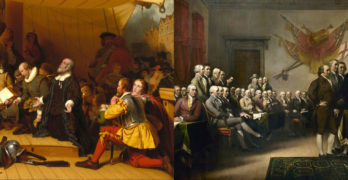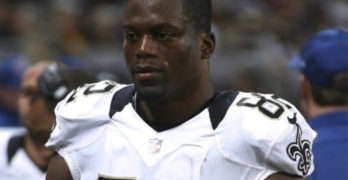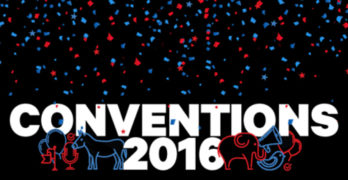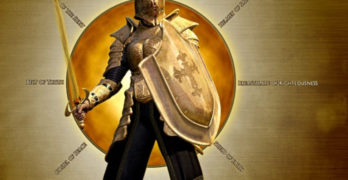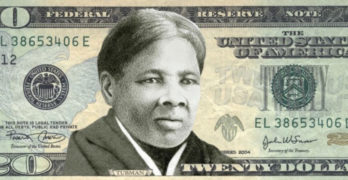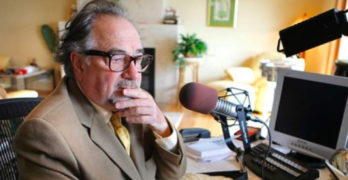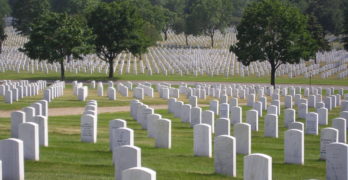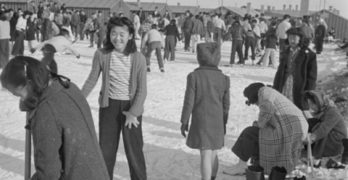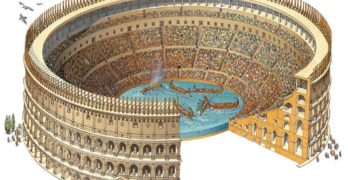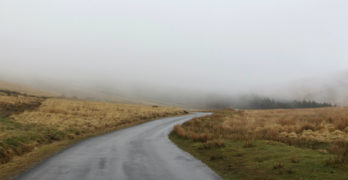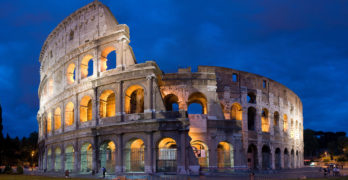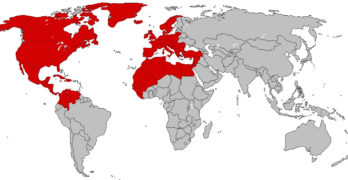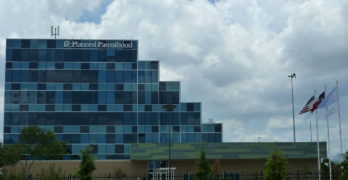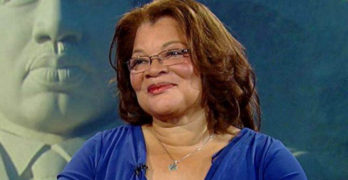 From my years young in days of youth, God did make known to me his truth, And call’d me from my native place For to enjoy the means of grace. In wilderness he did me guide, And in strange lands for me provide. In fears and wants, through weal and woe, A pilgrim, past I to and fro-William Bradford
From my years young in days of youth, God did make known to me his truth, And call’d me from my native place For to enjoy the means of grace. In wilderness he did me guide, And in strange lands for me provide. In fears and wants, through weal and woe, A pilgrim, past I to and fro-William Bradford
The Voyage that Made a Nation
The Pilgrims arrived on these shores in 1620 in hopes of making a better life for themselves and their children while being able to worship freely and in peace. Undoubtedly the most famous colonists in world history, their faith and fortitude are legendary. Their perseverance laid the cornerstone of a new Nation. The Pilgrims’ courage, gratitude to God, and love for one another still inspire people today.
The story of Mayflower and her tumultuous trans-Atlantic crossing, Plymouth Colony- with its tragic first winter, treaty with the Wampanoag People and celebrated First Thanksgiving echoes down the ages and around the world. Regardless of anything that came before or after, Plymouth is the ‘once upon a time’ to the story of the United States — the symbolic, if not literal, birthplace of our Nation.
In describing the emotional worship service before the Pilgrim church’s departure from Holland, Governor William Bradford wrote that Reverend John Robinson:
…spent a good part of the day very profitably and suitable to their present occasion; the rest of the time was spent pouring out prayers to the Lord with great fervency, mixed with abundance of tears. And the time being come that they must depart, they were accompanied with most of their brethren out of the city, unto a town sundry miles off called Delftshaven, where the ship lay ready to receive them. So they left that goodly and pleasant city which had been their resting place near twelve years; but they knew they were pilgrims, and looked not much on those things, but lift up their eyes to the heavens, their dearest country, and quieted their spirits.
This passage from Bradford’s manuscript Of Plymouth Plantation makes reference to the Epistle to the Hebrews 11:13-16. According to the Geneva Bible (1560), the translation preferred by most Pilgrims, this reads:
(13) All these dyed in faith, and received not the promises, but sawe them a farre of, and beleved them, and received them thankefully, and confessed that they were strangers and pilgremes on the earth. (14) For they that say suche things, declare plainely that they seke a countrey. (15) And if they had bene mindeful of that countrey, from whence they came out, they had leasure to have returned. (16) But now they desire a better, that is an heavenlie: wherefore God is not ashamed of them to be called their God; for he hathe prepared for them a citie.
Bradford’s description of Robinson’s worship service first appeared in print in Nathaniel Morton’s New England’s Memorial (1669), a popular chronicle of Plymouth Colony written by the governor’s nephew. It is on the basis of this excerpt that Mayflower’s passengers first became known as the Pilgrim Fathers, or Pilgrims, in the late 1700s.
Who were the Pilgrims?
If we really want to understand them, we must try to look beyond the legends and see them as they saw themselves. They were English people who sought to escape the religious controversies and economic problems of their time by emigrating to America.

Many of the Pilgrims were members of a Puritan sect known as the Separatists. They believed that membership in the Church of England violated the biblical precepts for true Christians, and they had to break away and form independent congregations that adhered more strictly to divine requirements. A passage from the Second Epistle of Paul to the Corinthians gave urgency to their actions. The Geneva translation for Second Corinthians 6: 16-18 reads:
(16) And what agrement hathe the Temple of God with idoles? for ye are the Temple of the living God: as God hathe said, I wil dwell among them, and walke there; and I wil be their God, and shalbe my people. (17) Wherefore come out from among them, and separate your selves, faith the Lord: and touche none uncleane thing, & I wil receive you. (18) And I wil be a Father unto you, and ye shalbe my sonnes and daughters, saith the Lord almightie.
At a time when Church and State were one, such an act was treasonous and the Separatists had to flee their mother country. Other Pilgrims remained loyal to the national Church but came because of economic opportunity and a sympathy with Puritanism. They all shared a fervent and pervasive Protestant faith that touched all areas of their lives.
As English people, the Pilgrims also shared a vital secular culture both learned and traditional. They lived in a time that accepted fairies and witches, astrological influences, seasonal festivals and folklore as real parts of their lives. They looked at the world they lived in not as we do today – through the eyes of quantum physics and psychology – but through the folklore of the countryside and academic traditions that stretched back to antiquity. They were both thorough Protestants of the recent Reformation and the inheritors of the Medieval worldview that infused the imaginations of William Shakespeare and Ben Jonson.
The Separatist Faith
The Separatists’ faith experience was part of the larger English Reformation of the 16th century. This movement sought to “purify” the Church of England of its corrupt human doctrine and practices; the people in the movement were known as “Puritans.” Separatists were those Puritans who no longer accepted the Church of England as a true church, refused to work within the structure to affect changes, and “separated” themselves to form a true church based solely on Biblical precedent. Puritans rejected Christmas, Easter and the various Saint’s Days because they had no scriptural justification, and in their worship services, they rejected hymns, the recitations of the Lord’s Prayer and creeds for the same reason.
The Separatists believed that the worship of God must progress from the individual directly to God, and that “set” forms, like the Church of England’s Book of Common Prayer, interfered with that progression by directing one’s thoughts down to the book and inward to one’s self. The only exceptions were the Psalms and the Lord’s Supper, both of which had scriptural basis, and possibly the covenant by which individuals joined the congregation. As Pastor Robinson expressed it, even two or three “gathered in the name of Christ by a covenant [and] made to walk in all the ways of God known unto them is a church.”
Sabbath services were held twice on Sunday; in addition, sermons were often given on Thursdays, and as occasion demanded, Days of Thanksgiving or Days of Fasting and Humiliation were proclaimed. These latter were movable weekday holidays called in response to God’s Providence. Both were observed in a manner similar to the weekly Sabbath, with morning and afternoon services. The approximate times were from 9:00 AM to noon and from to 2:00 to 5:00 PM. In Plymouth Colony, according to the famous passage from Isaack de Rasiere’s 1627 letter:
They assemble by the beat of drum, each with his musket or firelock, in front of the captain’s door; they have their cloaks on, and place themselves in order three abreast, and are led by a sergeant without beat of drum. Behind comes the Governor, in a long robe, beside him on the right hand comes the preacher with his cloak on and on the left hand, the captain with his sidearms and his cloak on, and with a small cane in his hand; and so they march in good order, and each sets his arms down near him.

Once they reached the meetinghouse, the men and boys sixteen and older sat on one side; the women and children sat on the other side. John Winthrop, governor of the Massachusetts Bay Colony, attended morning and afternoon Sabbath meetings while on a brief visit to Plymouth in October 1632. While de Rasiere described the manner in which the Pilgrims progressed to worship, Winthrop provides details on the order of worship. He pays special attention to prophesying. While no examples of prophesies have come down to us, it seems to have been similar in nature to a mini-sermon, consisting of a reading or quoting of a text and an exposition of its meaning and spiritual application, with some discussion of Christian doctrine:
On the Lord’s day there was a sacrament which they did partake in, and in the afternoon, Mr. Roger Williams (according to their custom) propounded a question, to which the pastor, Mr. Smith, spake briefly. Then Mr. Williams prophesied; and after, the Governor of Plymouth spake to the questions; and after him the elder, them some 2 or 3 more of the congregation. Then the elder desired the governor of Massachusetts and Mr. Wilson to speak to it, which they did. When this was ended, the deacon Mr. Fuller put the congregation in mind of their duty of contribution; whereupon the governor and all the rest went down to the deacon’s seat and put it into the box, and then returned.
William Brewster served as the Ruling Elder of the Pilgrim church from its days in Scrooby, Nottinghamshire, England to Leiden, Holland and finally Plymouth Colony. Ruling Elders were responsible for the government of the congregation, but as they were laymen and not ordained ministers, they could not deliver the sacraments. Elders were often referred to as the “eyes of the church,” governing and admonishing the congregation. In the absence of Pastor Robinson, who remained in Holland, Brewster preached and taught the in Plymouth. In memorializing Brewster after the Elder’s death in 1643, Governor William Bradford also supplies additional details on aspects of worship in Plymouth:
In teaching, he was very moving and stirring of affections, also very plain and distinct in what he taught; by which means he became the more profitable to the hearers. He had a singular good gift in prayer, but public and private, in ripping up the heart and conscience before God in the humble confession of sin, and begging the mercies of God in Christ for the pardon of the same. He always thought it better for ministers to pray oftener and divide their prayers, than be long and tedious in the same, except upon solemn and special occasions as in days of humiliation and the like. His reason was that the heart and spirits of all, especially the weak, could hardly continue and stand bent as it were so long towards God as they ought to do in that duty, without flagging and falling off.
Prayer, in keeping with Separatist belief, was completely extemporaneous. The Lord’s Prayer was considered a model to be followed, but not slavishly copied. Prayer was given by the Pastor or Teaching Elder. At this point in the service, the congregation rose. The speaker removed his hat, raised his eyes and lifted up his arms toward Heaven, and spoke. At the end, all joined in saying, “Amen.”
Scripture in the 16th century was often interpreted in a metaphorical sense; scholars searched for hidden meaning. Separatists concentrated of the literal and historical possibilities, generally ignoring the metaphorical interpretations. During this part of the service, a passage of scripture was read and expounded upon in this literal manner by the Pastor or Teaching Elder.
Finally, Psalms were the only music allowed in the service. Hymns were rejected because they had no scriptural basis. The versions of the Psalms used in Plymouth Colony came from Henry Ainsworth’s Psalter, in which he had “Englished” the Psalms in prose and metre, and set them to livelier music than had been heard before. These were sung, without musical accompaniment, by the whole congregation. Years later, in the 1670s, when the first generation of settlers–many of whom had musical training–had died, the colonists had difficulty with the music of the psalms. At this point, the practice of “lining” psalms began. In lining, each line of the psalm is first sung by the Pastor, then repeated by the congregation.
Copyright 2017, Plimoth Plantation-All rights reserved.
Image description: Signing the Mayflower Compact 1620, a painting by Jean Leon Gerome Ferris 1899


